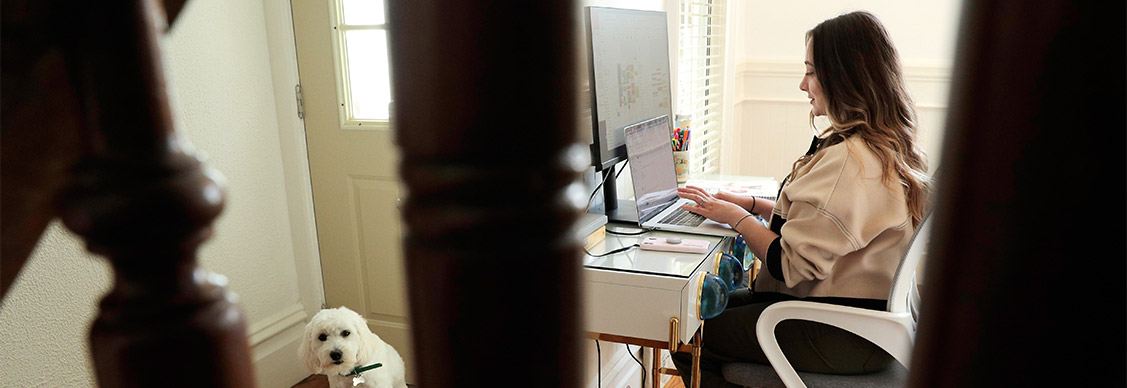What companies are doing about work-from-home fatigue
A new survey shows people want more of their previous office life back
A year into the pandemic, there are growing signs of fatigue with homeworking.
People’s ideal number of remote work days is slipping, according to a March survey. They feel less productive at home than a year ago. Even though the majority want flexibility in choosing when and where they work, a growing part of the workforce doesn’t want to work from home at all in the future.
“While working from home extensively, people feel stuck in an ‘endless day’ and they are losing the notion of time,” says Flore Pradere, Research Director, Global Corporate Research, JLL. “Employees are aspiring to more balanced working patterns.”
While work is likely to be far more flexible than before the pandemic, companies in recent months have been reckoning with exactly how they will implement hybrid structures to satisfying what both employees and companies require.
What employees say they require has changed over the course of the pandemic. In the JLL survey of 3,300 employees conducted in March, people said they want to work from home 1.5 days a week. This was down from 2 days in a similar JLL survey conducted last April.
Only 37% of the workforce now feels more productive at home than in the office, as opposed to 48% last year. And while 88% of respondents still want to choose their working hours, a third do not want to work from home at all.
In response to shifting sentiments, companies are trying to bring people back to the office to help spur the kind of innovative and collaborative thinking that happens in person, while keeping schedules loose.
Approaches vary widely. Ford Motor Company, for example, recently said it would transition in July to a “flexible hybrid work model” that allows people to stay home for heads-down work, and come into the office for projects that are collaborative. Bloomberg, on the other hand, reportedly told all employees to return to the office once vaccinated.
In Singapore, DBS Group Holdings Ltd. is allowing all staff to work up to 40 percent of their time remotely. United Overseas Bank Ltd. announced it will allow roughly 65 percent of its workforce to work at home two days a week once COVID-19 restrictions are lifted.
“Although the work from home experiment during COVID was deemed successful, the long term mental health implications are still being understood,” says Cynthia Kantor, Chief Product Officer, Work Dynamics, JLL. “What is clear is that over 75% of workers have missed being in the office at least part of the time and close to 80% of our clients prefer a hybrid approach. This is a very dynamic situation, and we are prepared to support our clients in any model they choose.”
The sweet spot for feeling engaged, empowered and fulfilled – at least for most surveyed office workers – is working from the office at a minimum of three days per week. The survey showed that if employees are working from home more than two days a week, engagement starts to taper off, and anxiety about the future can start to increase.
Looking for more insights? Never miss an update.
The latest news, insights and opportunities from global commercial real estate markets straight to your inbox.
The sweet spot
“Achieving productivity at home is a tricky challenge,” Pradere says. “Highly productive homeworkers demand support and recognition.”
At the other end of the spectrum, less productive homeworkers can veer into feeling unfulfilled in their job. The office is key in offering them structure and a sense of purpose.
This is the challenge companies are confronting, says Kantor.
“While the notion of hybrid work is great in theory, putting it into practice is no small task,” she says. "But the companies that can keep employees engaged and committed are going to win the war for talent.”
It’s a war that never really went away, despite economic troubles in 2020. In the U.S., the unemployment level for skilled workers is falling.
Companies aiming to boost productivity in this new environment are considering workplaces that encourage and support different needs: socialization and collaboration, focused work, creative spaces for brainstorming, areas dedicated to learning and development, or spaces connected with nature.
Some people will seek out the office as a quiet place to focus and concentrate because their homes might not be conducive to that. Others, especially younger workers new to the workplace, will be focused on engaging and networking with others.
“Finding the right mix will vary from one company to the other,” Kantor says. “The best workplaces are those created with input from employees.”
